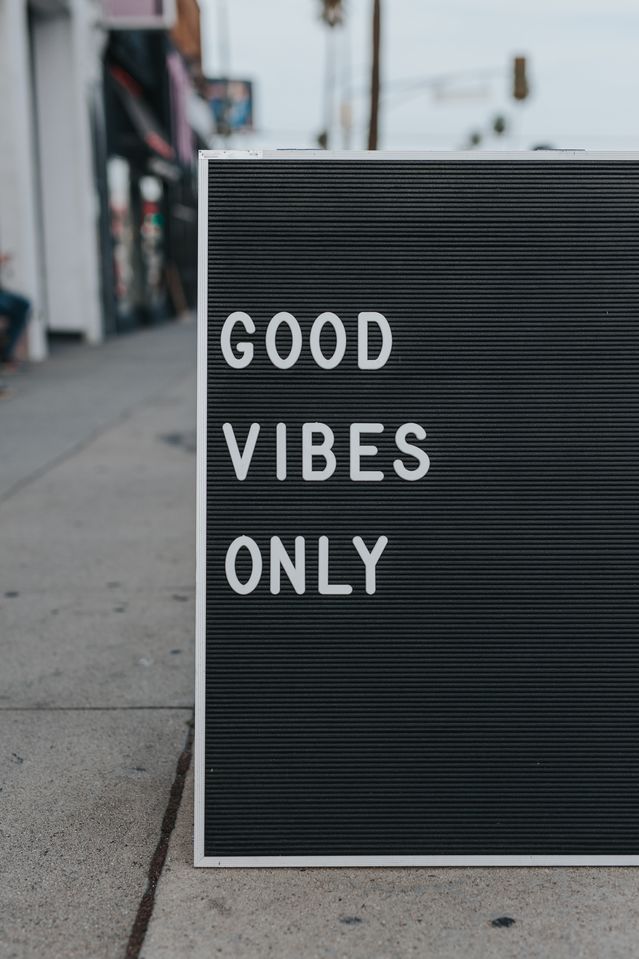Beauty
How to Get Physically Active and Build Body Positivity
These online resources will get you moving—and loving your body.
Posted April 26, 2018

Spring has officially sprung. Like many people, you might use this moment to reflect on the start of your 2018, and think about any tweaks you want to make for the coming months. In January, I wrote about one simple change you can make to feel better about your body in 2018—namely, by focusing on your body functionality, or everything your body is able to do. Continuing this theme, I’d like to share two of my favorite online resources that will have you celebrating your body functionality and developing body positivity along the way. I’ll tell you about why I think they’re great, as well as what to look for in your own search for body-positive activities.
1. Jessamyn Stanely
What’s she about? Jessamyn Stanley describes herself as a “yoga enthusiast and fat femme.” You can find many of her yoga classes online, via YouTube. As an advocate for body positivity, she has also written about and done several interviews on the topic. See, for example, “Episode 3: How to Get a Yoga Body with Jessamyn Stanley” for the Unladylike Podcast.
What I love most: Jessamyn encourages us to ask “’How do I feel’ rather than ‘How do I look’ when practicing yoga.” I love this, as it is perfectly in line with our lab's research showing that we feel better about our bodies when we focus more on what they can do, rather than how they look. Jessamyn also says that every body can do yoga, even if your body doesn’t fit society’s idea of what a yoga student “should” look like (Google “yoga” and you’ll see what I mean). Research shows that when we see diverse bodies—and learn to respect our own body as is—we feel more confident in our own skin.
2. Fitness Marshall
What are they about? Fitness Marshall (Caleb Marshall) and his back-up dancers Bria Nachele and Haley Jordan teach you dance routines to various popular songs.
What I love most: Fitness Marshall doesn’t take himself, or dancing, too seriously. For example, he helps you to learn dance moves by imagining ridiculous scenarios (e.g., “throw it [cake] in your face, rub it on your body!”), and there’s no shortage of amateur animations and silly jokes. No matter how many times I watch the same videos, I still find myself smiling. The videos remind me not to take myself too seriously, and to dance for the fun of it. Research shows that doing physical activities for enjoyment and health-related reasons (e.g., stress relief), compared to those we do for appearance-related reasons (e.g., weight loss), make us feel better about our body and contribute to greater well-being. It’s also important to tackle self-criticism and perfectionism, and instead treat ourselves with compassion. I also love that Fitness Marshall has had diverse guest dancers, such as Amanda LaCount, LIL Miss Ross, and Whitney Way Thore. Again, seeing a diverse range of people working out – and loving it – helps us to see beauty in all body types and accept our own body as is.
The take-home message
These are just two of my favourite online resources to get physically active and build body positivity. But there are many other resources out there, too. What these two examples teach us is that physical activities can promote body positivity when they helps us to: (a) value our body functionality, (b) accept and respect our body as is, (c) see the beauty in different body shapes, sizes, ethnicities, ages, abilities, etc., and (d) find the joy in movement.
In her recent interview for the Unladylike Podcast, Jessamyn said that the main thing she does to promote a body-positive space actually has nothing to do with her own body size or her students’ body size. Rather, it’s about the kind of atmosphere you create. She said, “I want everyone to feel like ‘it’s cool.’ You can show up exactly as you are, and it’s fine.’”
My advice? In your own quest for body-positive activities that you love, be on the lookout for these characteristics and for teachers that create a body-positive space—and drop those activities and teachers that don’t.
If you have any body-positive resources that you’d like to share, please comment below or send me an email at jessica.alleva@maastrichtuniversity.nl. I’d love to hear from you!
References
Alleva, J. M., Diedrichs, P. C., Halliwell, E., Martijn, C., Stuijfzand, B. G., Treneman-Evans, G., & Rumsey, N. (2018). A randomised-controlled trial investigating potential underlying mechanisms of a functionality-based approach to improving women’s body image Body Image, 25, 85-96.
Alleva, J. M., Martijn, C., van Breukelen, G. J. P., Jansen, A., & Karos, K. (2015). Expand Your Horizon: A programme that improves body image and reduces self-objectification by training women to focus on body functionality. Body Image, 15, 81-89.
Altman, J. K., Linfield, K., Salmon, P. G., & O Beacham, A. (2017). The Body Compassion Scale: Development and initial validation. Journal of Health Psychology, 1-11.
Mulgrew, K. E., McCulloch, K., Farren, E., Prichard, I., & Lim, M. S. C. (2018). This girl can #jointhemovement: Effectiveness of physical functionality-focused campaigns for women’s body satisfaction and exercise intent. Body Image, 24, 26-35.
Tylka, T. L., & Wood-Barcalow, N. L. (2015a). What is and what is not positive body image? Conceptual foundations and construct definition. Body Image, 14, 118-129.
Vartanian, L. R., Wharton, C. M., & Green, E. B. (2012). Appearance vs. health motives for exercise and for weight loss. Psychology of Sport and Exercise, 13, 251-256.


